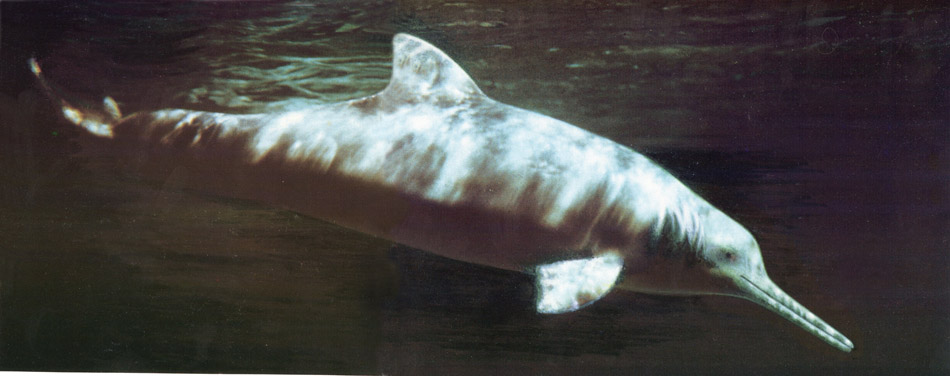FRESHWATER & RIVER DOLPHINS
PLATANISTIDAE
During the great radiation, or dispersion, of marine mammals in the Miocene epoch, at least one group of cetaceans moved into estuarine and freshwater habitats, swimming far up the large rivers in tropical regions of the world. These animals were the platanistids, or river dolphins, now represented by four genera found exclusively in South America and Asia.
All river dolphins retain certain skeletal characteristics that are relatively primitive by comparison with other cetacean’s structures, and they are similar to those of the ancestors of all small cetaceans. River dolphins have extremely long beaks (one-fifth to one-seventh of the overall body length) and interlocking conical teeth to grasp fish and invertebrates stirred up from river bottoms. Typically, they have poor eyesight; the turbid waters of their habitat make good vision unnecessary. They do possess excellent echolocation abilities and make social noises as well, indicating that they branched off from their marine cousins after those adaptations were well underway. Because of their shy habits, the river dolphins are surrounded by superstition and are generally little known. In spite of their proximity to the human populations that crowd the shores of the great rivers where they live, they have no generally been intentionally for food. Nonetheless, their numbers are dwindling in many areas, due to pollution, irrigation projects, and other human activities. It has recently been proposed that the four genera of river dolphins represent four evolutionary departures from primitive dolphins and that each therefore deserves familial taxonomic status. While the evidence for this is compelling, we must wait until the arguments are aired in scientific literature. Here and elsewhere it is better to take the conservative approach in matters of classification.








